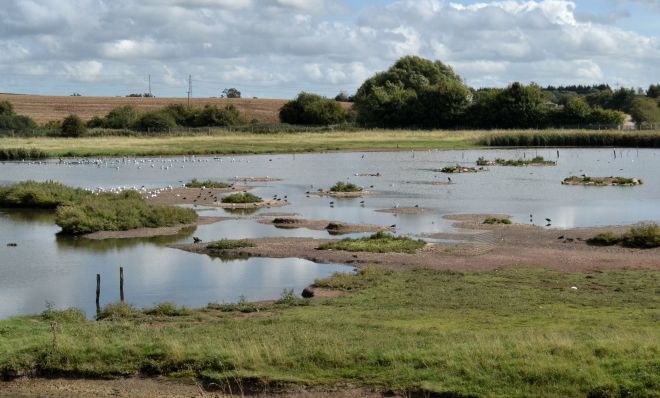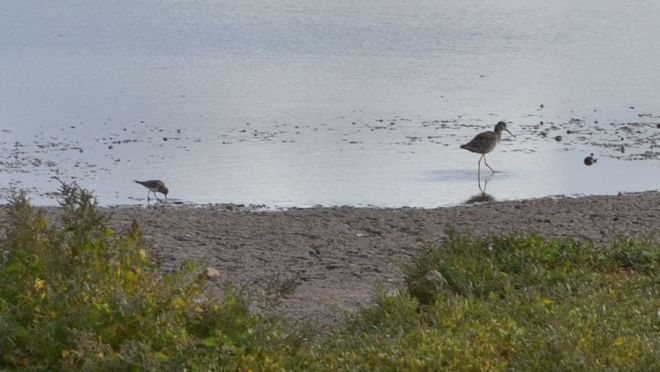Of that much waffled upon group of vagrant waders “accidental small Sandpipers” (see here) one north American breeder Baird’s Sandpiper has had a good British passage this autumn. Several and sometimes possibly the same individuals have been recorded over the last eight weeks but these have always been beyond my preferred range or involved tedious journeys, to Minsmere, Reculver and north Lincolnshire for instance. So when on Friday a Baird’s turned up a mere 78 miles from home, close by the M5 motorway near Bromsgrove in Worcestershire, it was game on.
Sunday morning dawned bright and sunny and I really needed to go somewhere to flush a certain amount of work related tedium out of the system. So the Baird’s being still present on RBA, off I set to the lengthily named Christopher Cadbury Wetland Reserve at Upton Warren. This Worcs Wildlife Trust site comprises a fresh water lake and the saline Flashes that arose out of historic salt extraction. Between the two lies a sailing lake created by material excavation for the nearby motorway. A west Midlands twitch the short run up the M40 is always agreeable, certainly more so than Suffolk or Kent.
I parked dutifully in the sailing club overflow car park, as instructed on RBA, then purchased a day permit from the club cafeteria. It soon became apparent that co-operation between the two interest groups extends no further, with clear lines of demarcation between (“are you a”) members and annoying, visiting green-clad optics carriers. Try asking to use a toilet here to find out what I mean. Things are so much more convivial at Oxford’s Farmoor Reservoir. As so often at these multi-use sites no-one was checking if birders were paying for permits anyway.

Inland salt marsh at Upton Warren Flashes
I somehow expect to see other Oxon birders on these occasions, and today Justin Taylor was leaving the last of three hides that overlook the Flashes. It was quite crowded inside and he pointed me in the general direction of my quest. Then I played dumb with a Ruff and another birder put me onto the Baird’s Sandpiper. Quite soon this rarity relocated to the inner shore in the above picture and proceeded to give grandstand views. But it was still too far away to capture any more than distant blur images, and there was little chance of repeating my recent picture success with Least Sandpiper. Nothing decent from this site had appeared on RBA yet, but that didn’t stop the incessant hopeful chatter of camera shutters inside the hide. For some good quality images from today see here.
The very clean and tidy looking juvenile Baird’s was generally buff toned in appearance with neat and delicately patterned upperparts. Slightly smaller than a Dunlin, it had a shorter, straighter bill than the latter and noticeably long wings that reached beyond the tail (primary projection) when at rest. After displaying all this to good effect the bird returned to the middle distance from whence it had emerged. I remained in the hide for 90 minutes throughout which it kept coming in and out of view to endless muttered directions for the benefit of new arrivals.

Baird’s Sandpiper (left) and Spotted Redshank
Job done it was very pleasing to have added this year’s third small Sandpiper to my life list, following Broad-billed (see here) and Least. The variety of other waders present at such a small site was impressive, with Common and Green Sandpiper, Common and Spotted Redshank, Ruff, Curlew, Lapwing and Avocet all in view at once today. The Flashes here are saline, receiving brine from underground seepage. The on-site information boards explain that in places the high salt levels prevent the growth of vegetation. In other areas salt tolerant or dependent plants create an inland salt marsh that is unique in the country. Hence Upton Warren has a reputation as one of Worcs’ best birding sites. Lack of a good photograph aside today was a very satisfying experience.
